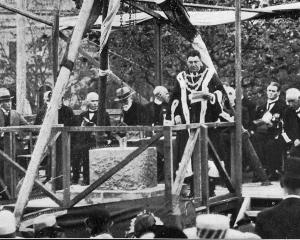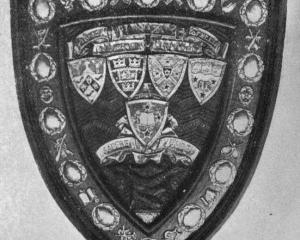
The Home Science Committee reported having received from Professor Rawson correspondence on a variety of matters, and the committee had resolved: That the chairmen of the Home Science and Finance Committees be asked to report as to the possibility of renting an additional house; that the committee agrees to the institution of a nutrition clinic, and expresses its very cordial appreciation of the project; to recommend the council to agree to Professor Rawson’s proposal that Professor Strong should come into residence at Studholme House in 1922. The Chancellor explained that the idea was that mothers should be instructed in theproper nutrition of children, and that instruction might be given that was very much needed, apparently not only
in homes, but it might be of very great value to the whole community.
Cancer on the increase
The increase in the incidence of cancer, to which, as we have learnt by cable, the medical correspondent of The Times has drawn pointed attention, is reasonably exciting concern throughout the world. The statement that in every civilised country the rate of mortality due to this disease has practically doubled itself startlingly challenges attention. The situation is rendered only a little less disquieting when due allowance is made for the fact that the statistics do not take into account the effect with respect to the recorded increase of the disease over a long period, of the greater present-day accuracy in the diagnosis of cancer, of the improvement in the matter of registration, and of increased longevity, so that more persons than formerly now reach the later decades of life during which the incidence of the disease is liable to be heavy. The actual increase of cancer within recent years will have been measured, however, with sufficient precision. In the case of New Zealand, statistical evidence shows that more deaths are attributable to cancer than can be assigned to any cause other than organic disease of the heart. In 1919 there were 1031 deaths from cancer in the dominion, this number being the highest yet recorded — “an unenviable distinction,” the statistician observes, ‘‘which almost every year in succession attains.” Whereas 7.05 percent of the total mortality in the dominion in that year was due to tuberculosis, not less than 9.54% was due to cancer; and whereas in the case of tuberculosis the proportion is fortunately declining, in the case of cancer it is increasing.
Sad scene in court
A baby's cry sounded in the Juvenile Court yesterday from a hidden form in a large woollen shawl which was held in the arms of a Salvation Army sister, while the sorrowful mother, who had no means of supporting her children, was interrogated by the magistrate (Mr H.Y. Widdowson). The baby and another child of four years were committed to the Caversham Industrial School to be brought up in the Presbyterian form of religion, and the mother was ordered to pay 5 shillings a week towards their support from September 1. — ODT, 17.8.1921.












